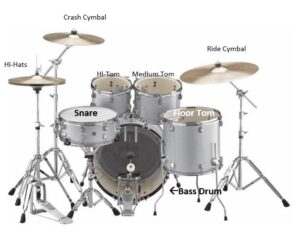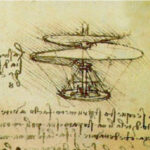The Modern Drum: An Evolutionary Revolution
Drums have been an integral part of human culture for centuries, serving as a means of communication, entertainment, and expression. Over time, drums have undergone significant changes, transforming from simple percussive instruments to complex and versatile musical tools from the Leonardo da Vinci Mechanical Drum.
The Origins of Drumming
Drumming: A Primitive Language?
Drums can be traced back to ancient civilizations where they played a vital role in communication. From tribal rituals to military commands, drumming provided a means to convey messages over long distances. In fact, some historians argue that drumming was the earliest form of human language, predating spoken words. Imagine a time when beats echoed through dense jungles, relaying warnings or celebrations to distant communities!
From Animal Skins to Sophisticated Materials
In the early days, drums were crafted from natural materials such as animal skins stretched over wooden frames. These simple yet effective designs produced resonant sounds, setting the foundation for future drum innovations. As civilizations advanced, drums evolved to incorporate various materials like metals and synthetic fibers. Today, drumheads made of Mylar (polymer film) or Kevlar (aramid fiber) provide enhanced durability and tonal versatility.
The Modern Drum: An Evolutionary Revolution
Revolutionizing Drum Construction: The Birth of the Modern Drum Set
The birth of the modern drum set can be attributed to the innovations of the 19th century. Drummers sought to expand their tonal range and playability, leading to the integration of multiple drums and cymbals into a single instrument. This revolutionary concept gave birth to the drum set we know today, with its characteristic arrangement of bass drum, snare drum, toms, and cymbals. The modern drum set unleashed a world of possibilities for drummers, enabling them to create intricate rhythms and explore new musical genres.
The Rise of Electronic Drums
In the 20th century, the emergence of electronic technology revolutionized the drumming landscape. Electronic drums offered drummers a whole new realm of sonic exploration. These instruments utilized electronic triggers to produce sounds, allowing for a vast array of customizable sounds and effects. From replicating acoustic drum sounds to creating entirely synthetic beats, electronic drums expanded the creative horizons of drummers across genres.
Advancements in Drumstick Design
Drumsticks, an essential tool for drummers, have also seen significant advancements. Traditional wooden sticks have been augmented with materials like nylon and carbon fiber, enhancing durability and providing different tonal qualities. Additionally, drumstick manufacturers have introduced innovative designs, such as ergonomic grips and specialized tips, to cater to the diverse playing styles and preferences of drummers.
Incorporating Technology: Drum Modules and Sound Libraries
Modern drums have embraced technology in the form of drum modules and sound libraries. Drum modules are electronic devices that control and produce sounds in electronic drum kits. They offer a wide range of customizable features, including different drum sounds, effects, and connectivity options. Sound libraries, accessible through drum modules or software, provide drummers with an extensive collection of high-quality sounds and samples to enhance their performances.
Frequently Asked Questions About the Modern Drum
How has the modern drum set influenced different music genres?
The modern drum set’s versatility and expanded tonal range have played a crucial role in shaping various music genres. From jazz to rock, pop to metal, the drum set has become an integral part of modern music, driving the rhythm and energy of countless songs.
Are electronic drums as expressive as acoustic drums?
While electronic drums offer a wide range of expressive possibilities, including sensitivity to different playing techniques and dynamic control, some drummers argue that they may not fully replicate the nuanced response and natural feel of acoustic drums. However, advancements in technology continue to bridge this gap, and many drummers find electronic drums to be a valuable addition to their musical toolkit.
How have advancements in drum technology affected live performances?
The advancements in drum technology have had a profound impact on live performances. Drum triggers and sample pads allow drummers to trigger pre-recorded sounds or samples during live shows, adding depth and texture to their performances. Additionally, the integration of electronic drums with acoustic drum sets has become increasingly common, enabling drummers to seamlessly switch between different sounds and effects during live performances.
Can beginners benefit from modern drum technology?
Absolutely! Modern drum technology offers numerous benefits for beginners. Electronic drum kits, for instance, often come equipped with built-in practice features, such as metronomes and play-along tracks, making it easier for beginners to develop their timing and rhythm. Furthermore, the ability to adjust volume levels and plug in headphones allows beginners to practice without disturbing others.
Are traditional acoustic drums being replaced by electronic drums?
Electronic drums have undoubtedly gained popularity in recent years, but it’s important to note that acoustic drums still hold a prominent place in the music industry. Many drummers and purists appreciate the organic and dynamic qualities of acoustic drums, and they continue to be the preferred choice in many genres and live performances. However, electronic drums offer unique advantages and have carved out their own space in the musical landscape.
Can drummers customize their electronic drum sounds?
Yes, drummers can customize their electronic drum sounds to a great extent. Drum modules and software provide a plethora of options for adjusting parameters such as pitch, tone, decay, and effects. Furthermore, drummers can create and save their own personalized drum kits by selecting specific drum sounds from vast libraries or by sampling and importing their own sounds.
The modern drum has come a long way from its humble origins. It has evolved into a sophisticated instrument that encompasses both acoustic and electronic realms. The drum set, with its diverse components and configurations, has become an icon of modern music, enabling drummers to express their creativity across genres.
Advancements in technology have pushed the boundaries of drumming, offering drummers a vast palette of sounds, effects, and customization options. Whether it’s the thunderous power of an acoustic drum kit or the limitless possibilities of electronic drums, the modern drum continues to drive the rhythm and heartbeat of music.
So, embrace the evolutionary revolution of the modern drum and let its beats carry you on a musical journey like no other!






